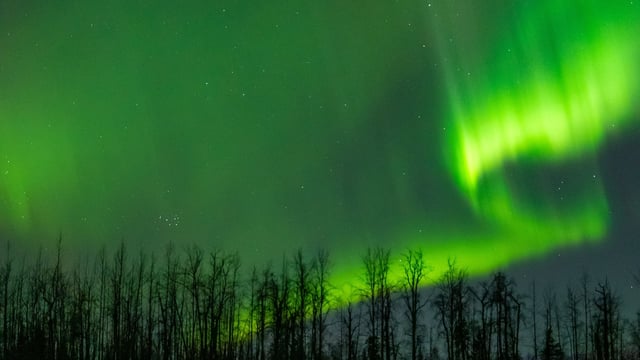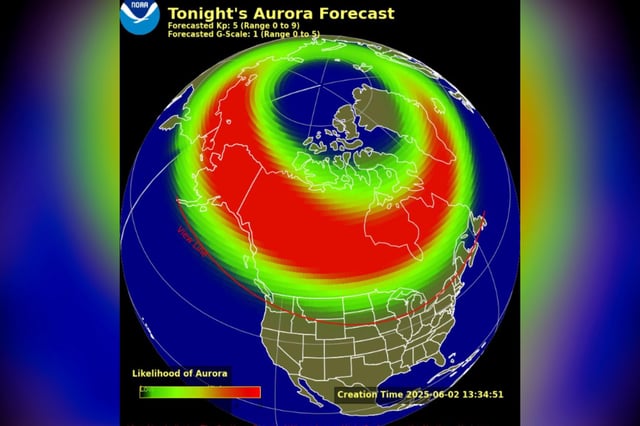Overview
- A coronal mass ejection from the Sun on June 1 triggered a severe geomagnetic storm measured at G4 strength, producing aurora borealis across parts of the US and Canada.
- Sky watchers reported the brightest displays overnight in Alaska, Montana, North Dakota, Minnesota, Wisconsin and Michigan, with fringe sightings as far south as Illinois, Iowa and Nebraska.
- Optimal viewing occurred between 9 p.m. and 2 a.m. local time, with auroras peaking around midnight under clear, dark skies.
- Forecasters expect auroras to linger into June 3 but at diminishing intensity, reducing the likelihood of sightings outside border states.
- Minor high-frequency radio and GPS disruptions were reported, demonstrating the storm’s potential to interfere with communications systems.



